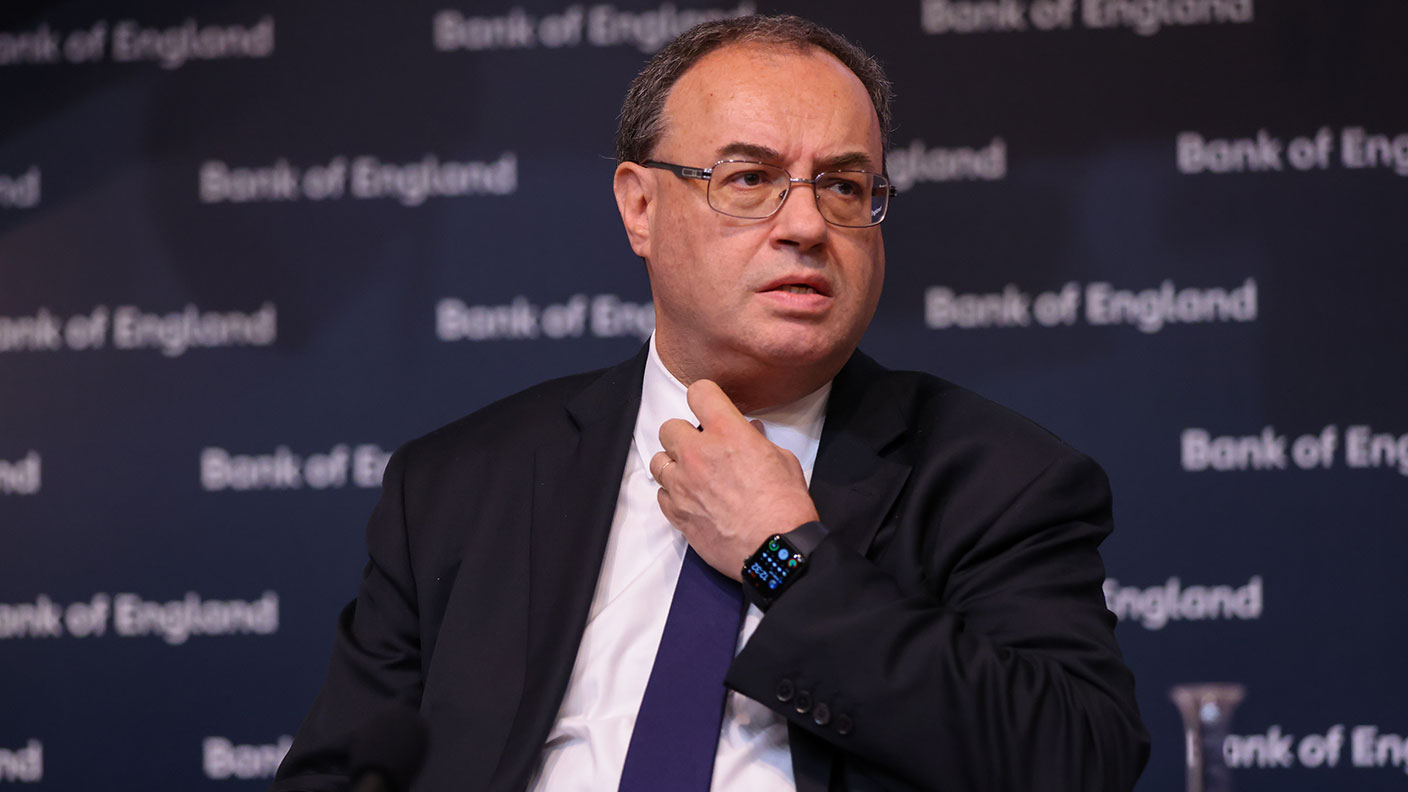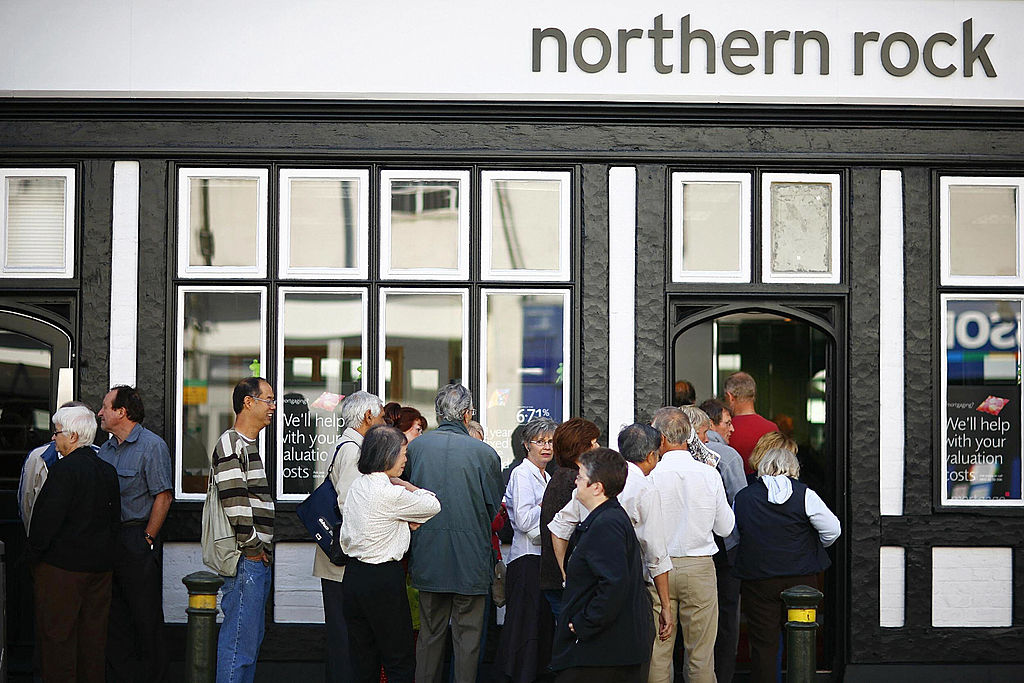Central banks are divided – so prepare for more turbulence
Central banks no longer agree on interest rates. The US is raising aggressively, while the UK is taking a more cautious approach and Japan is sticking to its plan of “yield curve control”. John Stepek explains why this matters, and what it means for the markets and your money.


Earlier this week, the Federal Reserve raised interest rates by three quarters of a percentage point. (That’s 75 basis points, or bps, in the financial jargon – so now you know what that particular acronym means).
That wasn’t a surprise for markets, but only because the surprise had been sprung a couple of days earlier, when inflation hit a new 40-year high and markets were primed – via well-connected journos – to expect a big rise rather than just half a point.
The Bank of England needs better communication skills
Yesterday, the Bank of England declined to copy its larger peer.
MoneyWeek
Subscribe to MoneyWeek today and get your first six magazine issues absolutely FREE

Sign up to Money Morning
Don't miss the latest investment and personal finances news, market analysis, plus money-saving tips with our free twice-daily newsletter
Don't miss the latest investment and personal finances news, market analysis, plus money-saving tips with our free twice-daily newsletter
It raised interest rates by a quarter point. Six of the nine-member Monetary Policy Committee (MPC) voted to raise rates by the quarter point, while three wanted to go further with the half point. So the Bank of England rate is now 1.25%.
Markets had half-expected a bigger hike in reaction to the Fed’s big rise. But the Bank of England right now is in a major quandary, one only rivalled by that of the European Central Bank (which has a lot more countries to take into account).
Yes inflation is high and only getting higher (the Bank now reckons it’ll go above 11% in October, and bear in mind, this is using the consumer prices index (CPI). Under the Bank’s previous target measure – the retail prices index minus mortgage interest costs (RPIX) – inflation is already sitting at more than 11%, so presumably that’ll be pushing 14% by then.
However, the UK is also flirting with recession. While the Bank became gloomier on inflation it also became gloomier on growth prospects. So you can see the argument for not raising rates too fast. The problem is that the Bank isn’t great at communicating or conveying any sort of confidence.
As Simon French, chief economist at Panmure Gordon pointed out on Twitter, “for good economic governance the hard work is explaining why an undersized move vs developed market peers. There is a narrative about balance of risks/confidence in policy path, but must be credible”.
In other words, the Bank needs to demonstrate more conviction in its lack of conviction.
Anyway, this divergence from the Fed saw the pound slide rapidly in the aftermath of the decision, although sterling rebounded later in the day after several US economic data releases turned out to be very disappointing (implying that perhaps the Fed is already tightening too much).
The Swiss turn hawkish but the Bank of Japan sticks to the plan
Flipping back to the hawkish side, the Swiss National Bank – Switzerland’s central bank – decided to surprise markets too yesterday, when it raised interest rates. Swiss rates were increased all the way from negative 0.75% (yes, negative) to negative 0.25%.
It may come as a surprise to anyone who doesn’t obsessively monitor global interest rates that Swiss rates are still negative. However, note that Swiss inflation is still only running at a bit below 3%. So in “real” terms, UK rates are a lot more negative than Swiss rates.
But back on the dovish side, we had the Bank of Japan (BoJ) this morning. The BoJ is probably the single most interesting central bank on the planet right now, which is not always the case by any means.
The BoJ put in place “yield curve control” (YCC) about six years ago. It declared that the ten-year Japanese government bond would essentially be fixed at 0%, and not allowed to move more than a quarter of a percentage point around that band.
In effect, the BoJ said it would print as much money as necessary to buy bonds if the yield went above 0.25%, or that it would sell bonds if the yield went below negative 0.25%.
When the BoJ did this, negative 0.25% seemed a much bigger risk than positive 0.25% (indeed, the latter would have been welcome). The point of YCC at the time – or at least one of the reasons for doing it – was to give the Japanese banking sector at least some way of generating profits by making sure there was at least a bit of “spread” (that is, gaps between the cost of borrowing over different lengths of time) in the system.
But now, with inflation rising – yes, even in Japan – and global bond yields doing likewise, the market is challenging the BoJ’s resolve. And so far the BoJ is not backing down.
At its latest meeting this morning, it said it will stick with YCC and it won’t be allowing the ten-year to rise further.
The tricky thing then though, is that this pressure has to come out somewhere. And that somewhere is in the currency.
Historically the Japanese yen has been a “safe haven” currency. It’s somewhere that investors used to run to in a market panic (partly because the yen was also a “carry” currency – big investors would borrow it at low rates to invest elsewhere in the good times, then have to rush back and buy yen back during “risk off” periods).
But that’s no longer the case. The yen is now trading at around 134 to the US dollar, the sorts of levels unseen in about 20 years.
Here’s why the 1970s is such a good analogy for today
What does all of this mean for investors?
No one has a crystal ball. But most of us have spent our adult lives investing in a market which relied on central banks to anchor it. The global political situation was benign. We’d enjoyed a “great convergence”. European countries were converging to form the eurozone. Once-communist countries were waking up to the benefits of capitalism, and democracy surely couldn’t be far behind. To use the much-abused term, it was the end of history.
Politicians basically agreed on everything. Markets were the only game in town. And, underpinned by central banks, embodied in the “maestro” Alan Greenspan, they could really only go up.
This was largely an illusion, and one which spent most of the 2000s becoming steadily thinner, with significant ruptures in 2008 and 2016. Now it’s pretty much out in the open.
Politics is no longer benign. Countries are diverging, rather than converging. Capital is no longer free and easy and can no longer expect to be treated well or welcomed with open arms in every destination.
Central banks cannot fix this. Whatever options they take will exacerbate one problem or another. And political “solutions” – whatever they are – will not be driven by the best interests of investors.
This, more than anything else, is why the 1970s is probably the best analogy for today. Politics, not markets, is pre-eminent. And that means anything can happen.
We’ve got more on that analogy in this week’s MoneyWeek magazine. If you don’t already subscribe, I suggest you do now. You’ll get your first six issues free.
Get the latest financial news, insights and expert analysis from our award-winning MoneyWeek team, to help you understand what really matters when it comes to your finances.
John Stepek is a senior reporter at Bloomberg News and a former editor of MoneyWeek magazine. He graduated from Strathclyde University with a degree in psychology in 1996 and has always been fascinated by the gap between the way the market works in theory and the way it works in practice, and by how our deep-rooted instincts work against our best interests as investors.
He started out in journalism by writing articles about the specific business challenges facing family firms. In 2003, he took a job on the finance desk of Teletext, where he spent two years covering the markets and breaking financial news.
His work has been published in Families in Business, Shares magazine, Spear's Magazine, The Sunday Times, and The Spectator among others. He has also appeared as an expert commentator on BBC Radio 4's Today programme, BBC Radio Scotland, Newsnight, Daily Politics and Bloomberg. His first book, on contrarian investing, The Sceptical Investor, was released in March 2019. You can follow John on Twitter at @john_stepek.
-
 RICS: Budget failed to boost property market and recovery unlikely until spring 2026
RICS: Budget failed to boost property market and recovery unlikely until spring 2026Data from the Royal Institution of Chartered Surveyors suggests the Autumn Budget hasn't helped to improve property market sentiment
-
 FCA launching targeted support to help savers with complex financial decisions
FCA launching targeted support to help savers with complex financial decisionsThe regulator wants to help you get to grips with investing and pension planning. Here’s how its new targeted support framework will help you
-
 Why Scotland's proposed government bonds are a terrible investment
Why Scotland's proposed government bonds are a terrible investmentOpinion Politicians in Scotland pushing for “kilts” think it will strengthen the case for independence and boost financial credibility. It's more likely to backfire
-
 How have central banks evolved in the last century – and are they still fit for purpose?
How have central banks evolved in the last century – and are they still fit for purpose?The rise to power and dominance of the central banks has been a key theme in MoneyWeek in its 25 years. Has their rule been benign?
-
 UK to have highest inflation among advanced economies this year and next, says IMF
UK to have highest inflation among advanced economies this year and next, says IMFThe International Monetary Fund (IMF) says it expects inflation to remain high in the UK, while lowering economic growth forecasts for 2026.
-
 Is Britain heading for a big debt crisis?
Is Britain heading for a big debt crisis?Opinion Things are not yet as bad as some reports have claimed. But they sure aren’t rosy either, says Julian Jessop
-
 'Britain is on the road to nowhere under Labour'
'Britain is on the road to nowhere under Labour'Opinion Britain's economy will shake off its torpor and grow robustly, but not under Keir Starmer's leadership, says Max King
-
 'Governments are launching an assault on the independence of central banks'
'Governments are launching an assault on the independence of central banks'Opinion Say goodbye to the era of central bank orthodoxy and hello to the new era of central bank dependency, says Jeremy McKeown
-
 Why investors can no longer trust traditional statistical indicators
Why investors can no longer trust traditional statistical indicatorsOpinion The statistical indicators and data investors have relied on for decades are no longer fit for purpose. It's time to move on, says Helen Thomas
-
 Live: Bank of England holds UK interest rates at 4.5%
Live: Bank of England holds UK interest rates at 4.5%The Bank of England voted to hold UK interest rates at their current level of 4.5% in March, as widely anticipated, after inflation rose to 3% in January
